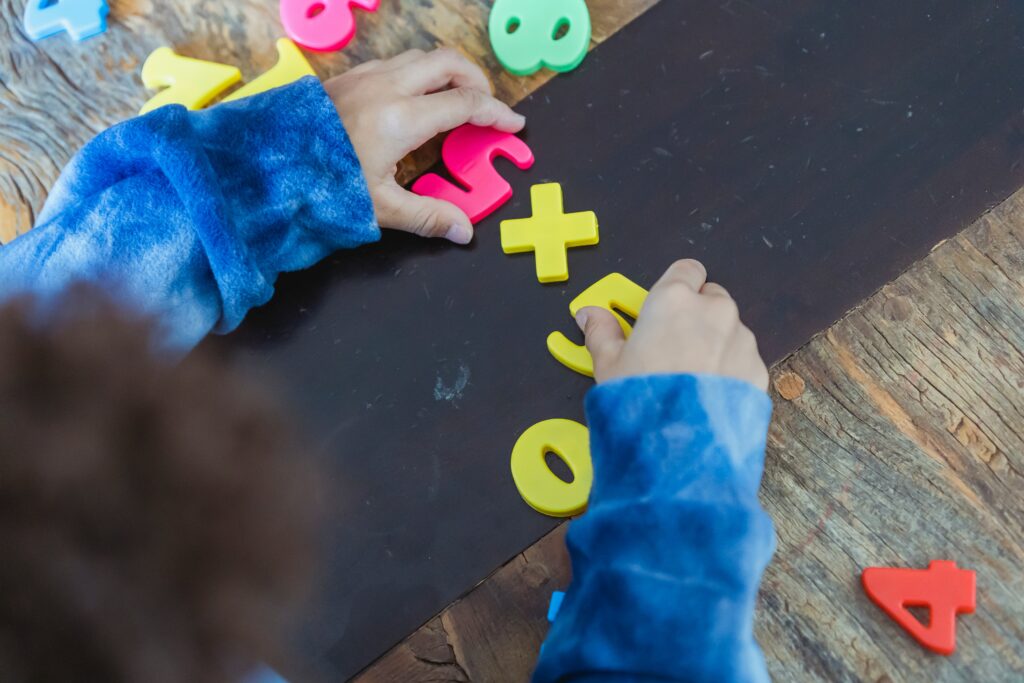Do you sing counting songs in storytime? Do you talk about more and less? Or read stories that compare sizes and shapes?
You may be doing more to increase early literacy in your storytime than you realize!
New research shows that children with a strong foundation in early math gain greater proficiency in both math and reading. The reverse is not so, early literacy skills only predict later reading success. Both math and print literacy form a strong foundation for school readiness and can be supported through storytime and other library programs.
Many adults have an aversion to math, but we use our number sense every day without thinking! When you glance at a plate of cookies and know there are three left, that’s subitisidation. When you understand that you need one more cookie to serve all 4 kids equally, you’re practicing your skills in ordinality and summation. Math can sound intimidating, so it’s important to start early and make it fun.
Even before babies have the words to express math concepts, they understand the idea of more and less. Toddlers eagerly engage in sorting, classifying, and spatial relationships. By encouraging math literacy in storytime we can help children build a strong foundation of math concepts that will support their math and reading skills.
Counting songs and stories are already a staple in storytime, but we often focus on only reciting numbers. By intentionally introducing math literacy in storytime we can help foster a stronger number sense in children, even with babies!

Here are some easy ways to support early math in your storytime:
- Encourage children to use their fingers to count, and model it yourself! Contrary to popular belief, children who count on their fingers gain a stronger understanding of quantity.
- Display a number chart when singing counting songs, and mix up what number you are counting to, why not seven apples?
- When counting things, ask children how many there are in total. “1 . . . 2 . . .3, how many ducks are there?”
- When counting with preschoolers, pause to ask, “If we add one more (or take one away), how many will there be?”
- Intentionally use math vocabulary when talking with young children and babies. Words like more, less, shorter, longer give children words to express math concepts. “Can you add one more block to the tower?”
- Use numbers when you talk to children, even babies. “We are going to read two books today!”
- Ask preschoolers how many they see without counting. For example, display the three books you are reading for storytime and ask, “How many stories will we read today?”
- Make patterns with colors or shapes on your flannel board.
To learn more, check out these resources:
Reimagining School Readiness: Time to Try Math Cards
